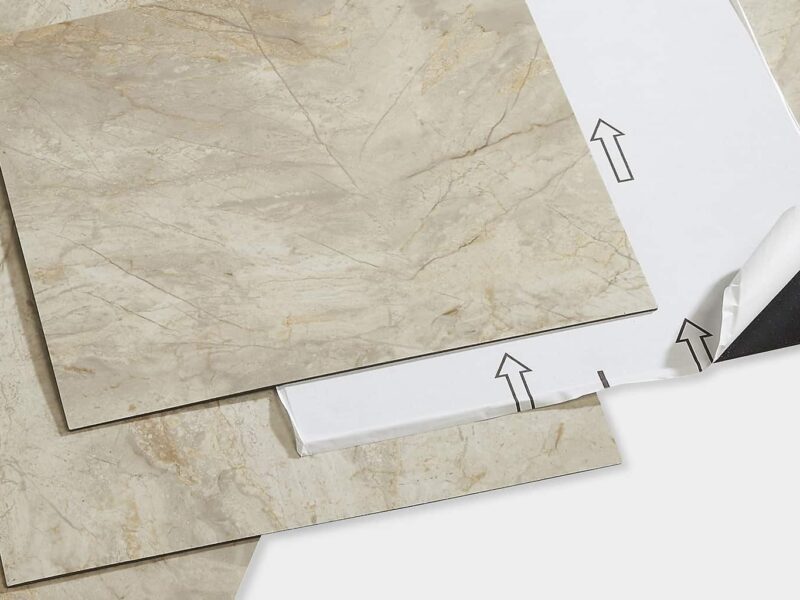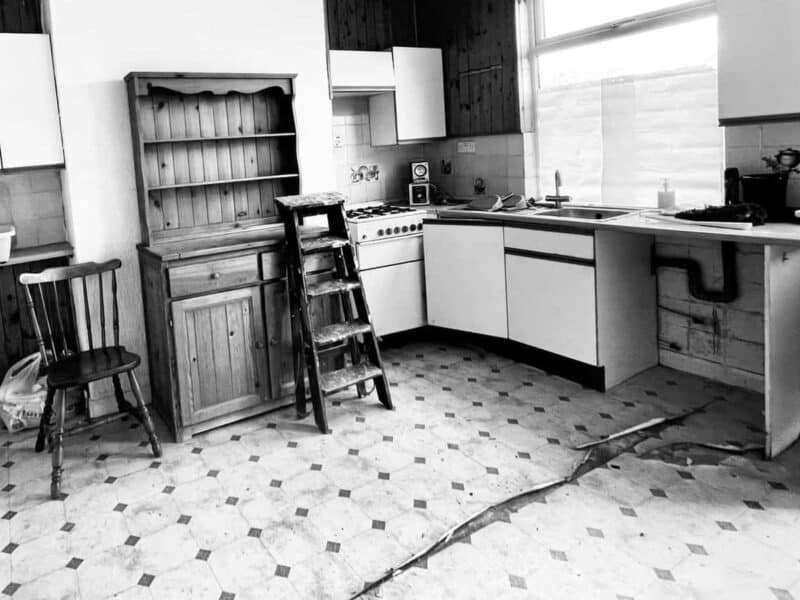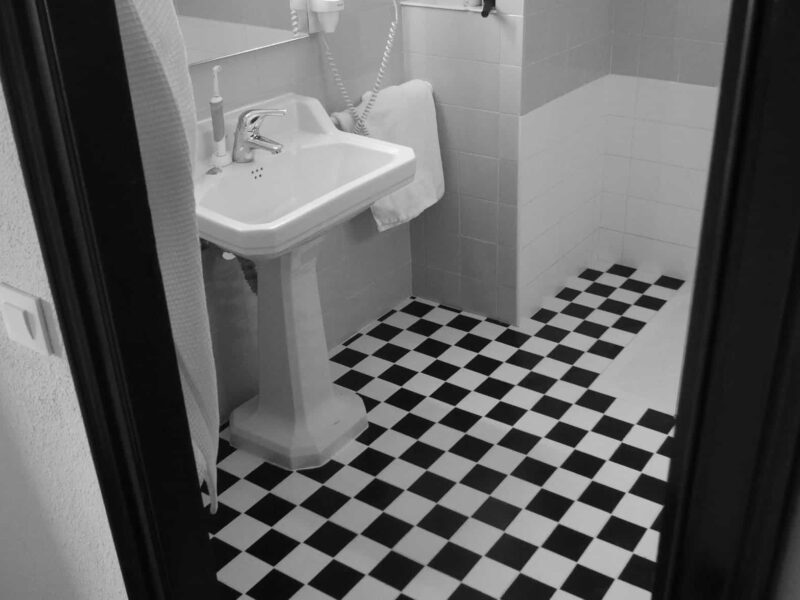
With its durability, comfort underfoot, stain resistance and easy maintenance, not to mention availability in a range of colours, patterns and even realistic replications of other flooring materials, it is not surprising that vinyl is a popular choice for flooring, particularly in the home.
It is ideal for active families and those with pets, as well as being a good choice for many commercial settings. Vinyl comes in two forms: sheet and tile, each with its own pros and cons.
Vinyl Sheet
Vinyl is a multi-layered form of flooring, with a protective top layer usually made of urethane, a protective clear vinyl layer, followed by the printed vinyl design layer and then finally the backing.
The top layer helps to protect against scratches and scuff marks while the clear vinyl layer helps to protect against gouges, rips and tears. It is also the thickness and quality of this layer that most determines the floor’s durability and appearance retention.
Most vinyl sheet sold is constructed with a felt backing but a small minority has the new construction format using fiberglass backing, resulting in a more cushioning floor and more installation options.
Vinyl sheet’s popularity stems largely from its adaptability for use in any part of the home, from high traffic areas such as hallways and family rooms to wet areas such as Kitchens and Bathrooms. It is also a popular choice for laundries and basements.
One place vinyl does not suit is stairs, as it is only designed for flat, level surfaces. Remember that if choosing vinyl sheet for high traffic areas, try to opt for thicker versions which will stand up better under constant wear and tear.
In addition, while it is effectively water-proof and therefore an ideal choice for rooms with high moisture, the installation adhesive is still water-soluble and therefore, beware of exposing the seams or perimeters of vinyl sheet flooring to water.
Vinyl sheet flooring is expected to last 20-30 years if it is of good quality and properly installed and cared for. It does not need waxing, buffing or polishing; simply a regular sweep or vacuum, backed up by an occasional mop with a special vinyl floor cleaner.
Unlike many other types of flooring, because of its waterproof properties, there is less urgency in cleaning up any liquid spills on the flooring.
Vinyl sheet is not one of the more DIY-friendly Floors. The biggest problem is cutting the vinyl sheet to the correct size. Sheet vinyl is heavy and extremely bulky to work with.
Some DIY kits do contain tools to help you pattern and cut the vinyl but in many instances, it may be better to resort to professional installation.
In all cases, ensure that the subfloor is flat and dry and most of all smooth. If not, an embossing leveler may need to be used to smooth over textured surfaces, patch irregularities or fill in grooves.
Providing it is smooth and resilient, the sub floor can be concrete, hardwood or plywood. Sealing a vinyl floor seam successfully is the other challenge and unless you are an experienced DIY enthusiast, again, it may best be left to professionals.
Vinyl Tile
As would be expected, vinyl tile shares many of the same properties as vinyl sheet. It is identical in construction except that it often comes with a ready peel-and-stick adhesive backing which is ideal for DIY installations.
It offers all the same benefits of durability and versatility, stain-resistance and water-proofing, as well as the multitude of colours and designs and simulations of other flooring materials.
In addition, the module tile format gives you even more flexibility in design options, allowing you to use different colours in a combination of different tiles to create checkerboard looks and other visual effects.
Modern vinyl tiles are even available in different-sized squares and as luxury vinyl tile plank shapes which replicate the look of hardwood flooring with amazing success.
One of the key differences between vinyl tile and vinyl sheet is that the modular tile format results in seams in which dirt and moisture can accumulate whereas sheet vinyl is virtually seamless and therefore has a much more uniform appearance.
This means that when vinyl tile is used in places of high moisture, such as in bathrooms, it is important to wipe up any spills or pooling water promptly so that it does not seep between the seams and damage the adhesive bonds and floor substrate.
Another key difference is that vinyl tile has a lower life expectancy, from just 5 to 20yrs, depending on the initial quality of the vinyl used and the level of care and maintenance it receives. Like sheet vinyl, the thicker the tile, the more durable and long-wearing it will be.
However, note that although tile has a lower life-expectancy, it is much easier and cheaper to repair as only the damaged or stained portion needs to be replaced.
Probably the biggest differences between vinyl sheet and tile is in the installation. Unlike vinyl sheet, vinyl tile is very DIY-friendly and thus can be a huge cost saver in renovation and building projects by saving you the need to hire a professional installer.
Most vinyl tile will come either in the ‘glueless’ form, with adhesive tabs or spray adhesive, or in the peel ‘n’ stick self-adhesive form which also does not need glue. You can also get full-spread ‘luxury’ vinyl tile which needs adhesive and trowel for installation but these types are not recommended for DIY projects.
The glueless form is the easiest and allows for easy placement and removal. It even comes with a roll-out underlay that is pre-marked with a grid pattern to help you with installation.
Peel ‘n’ stick tiles are also easy to install but the self-adhesive is very strong and therefore it is wise to measure thoroughly before laying the tile down as it is very difficult to remove once stuck. Just like with vinyl sheet, it is very important that the subfloor is properly prepared and is dry, flat and smooth.
If you are using self-adhesive tiles, a latex primer applied to the subfloor before installation is a good idea.


